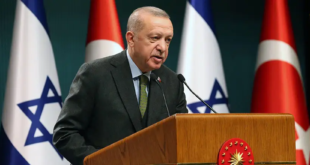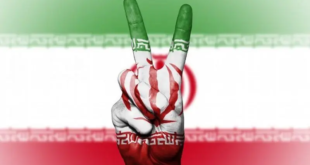DUBAI (AP) — The deployment of the USS John C. Stennis to the Middle East will put two US aircraft carriers in the volatile Gulf region for the first time since the 2003 Iraq invasion. Military officials say a second carrier group is meant as a plain warning to Iran.
The US military’s show of strength comes in response to Iran’s recent anti-US agitation in the oil-rich Persian Gulf. US Defence Secretary Robert Gates said Monday that Iran and other US adversaries believe the United States has become vulnerable in Iraq.
“This demonstrates our resolve to do what we can to bring security and stability to the region,†Cmdr. Kevin Aandahl of the US Navy’s Fifth Fleet in Bahrain said on Tuesday.
Aandahl said the Stennis carrier strike group of eight ships and nine air squadrons would arrive in Mideast waters in a matter of weeks, after crossing the Pacific and Indian oceans.
US diplomats including Secretary of State Condoleezza Rice have been touring the region to shore up American credibility. The United States’ Arab allies have grown dismayed over Iraq’s chaos, while a resurgent Iran is supporting armed groups across the region.
“Rice is promising the US will stand firm against Iran. But without a show of force, without backing these words with muscle, no one will take the US seriously, whether in Tehran or any Arab capital,†said Mustafa Alani, a military analyst with the Dubai-based Gulf Research Centre.
“Now is the time. They have to stand or shut up.†The Stennis strike group, which was previously in line to deploy to the Pacific, will augment another navy task force in Mideast waters led by aircraft carrier USS Dwight D. Eisenhower, Aandahl said.
A second US carrier will significantly boost USÂ Â Â airpower in the region and serve as a reminder of US firepower to Iran. Its arrival will give the Pentagon two carriers in the region for the first time since 2003, Aandahl said.
The USS John C. Stennis was scheduled to depart Tuesday from its homeport of Bremerton, Washington, stopping in San Diego to pick an air wing of more than 80 planes, including F/A-18 Hornet and Superhornet fighter-bombers, the navy said.
The Stennis could also shore up air cover for US and NATO ground troops in Afghanistan, now relying on about 20 ground-based warplanes after the Eisenhower was sent to the Somali coast.
The Pentagon is also sending an additional Patriot anti-missile battalion to a US allied Gulf Arab country, as well as 21,500 more US troops to Iraq.
Two Royal Navymine sweepers were dispatched to the Gulf on December 19 and had arrived several weeks ago, Britain’s ministry of defense said Tuesday.
The HMS Blyth and HMS Ramsey, which carry a 34 sailors each, is engaged in training exercises and will be for the next two years, a military spokesman said, on condition of anonymity in line with government policy.
“Obviously their presence in the Gulf will contribute to regional stability,†the spokesman said. “But this is a training mission, they have not been sent to counter any specific threat.†In Brussels on Monday, Gates indicated that Iran’s perception of US vulnerability in the region was part of the reason the Pentagon sent the Stennis and the Patriot missiles.
“The Iranians clearly believe that we are tied down in Iraq, that they have the initiative, that they are able to press us in many ways,†Gates said.
Patriots defend against short-range missiles of the type that Iran could use to hit US bases in the Gulf. The Pentagon has not said exactly where the Patriots will be based.
The escalating American combat power doesn’t mean Washington is bent on a showdown with Tehran, Alani said.
But the preparations could foretell tough US action against Iranian-backed groups in Iraq, with Washington preparing for retaliation elsewhere.
“They’re not trying to pick a fight†with Iran, Alani said. “But if Iran makes any mistakes, the US will deal with them.†Iran has denounced the Patriot deployment as part of US plan to turn Arab countries into a front line of protection for Israel.
In December, Tehran’s top national security official, Ali Larijani, asked Arab leaders to shut down US military bases in the Gulf and instead opt for a security alliance with Iran. Gulf leaders have shown no inclination in ending their US security umbrella.
The Stennis and its 3,200 sailors lead a strike group consisting of the guided-missile cruiser USS Antietam, three navy destroyers — the USS O’Kane, Preble and Paul Hamilton — the submarine USS Key West, the guided-missile frigate USS Rentz, as well as the supply ship USNS Bridge, the navy said.
Washington will keep two carriers in the Middle East “as long as the situation demands it,†Aandahl said. A typical carrier deployment lasts six months.
The United States maintains nearly 40,000 troops in Gulf countries other than Iraq, including about 25,000 in Kuwait, 6,500 in Qatar, 3,000 in Bahrain, 1,300 in the United Arab Emirates and a few hundred in Oman and Saudi Arabia, according to figures from the Dubai-based Gulf Research Centre.
 Eurasia Press & News
Eurasia Press & News



